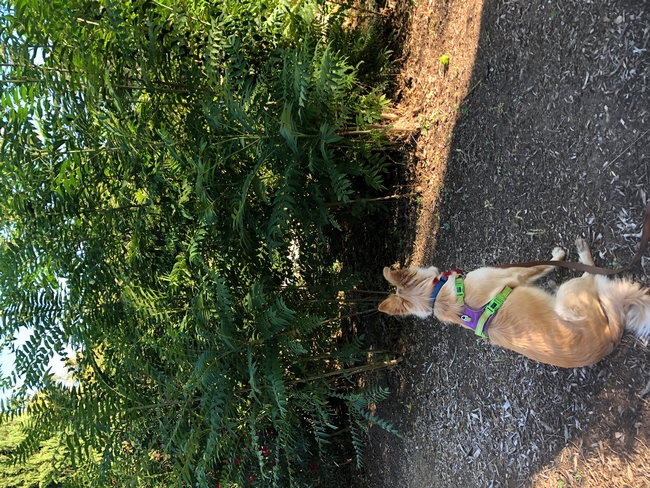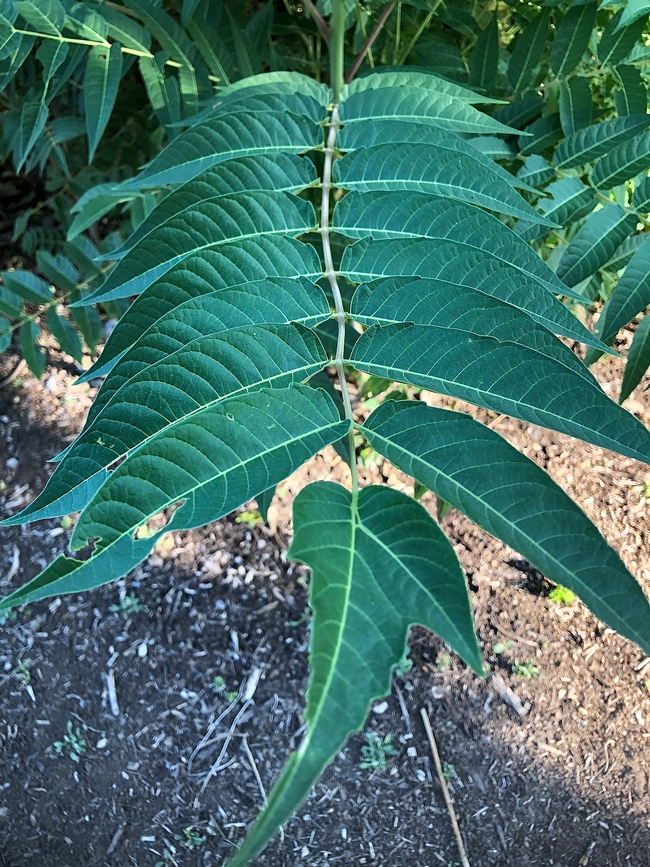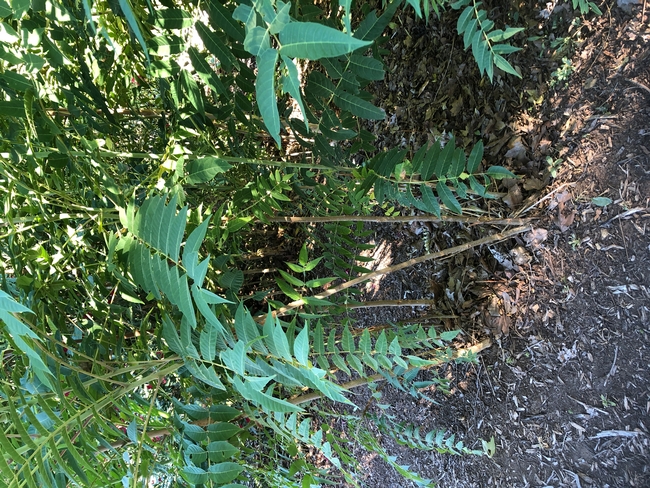- Author: Sherry Blunk
When offered the opportunity as a Master Gardener to be trained and unleashed on CA to ID and log sighting of the Tree of Heaven (TOH) (Ailanthus altissima), I jumped at the chance. TOH is an invasive, wildly hearty, rapidly growing deciduous tree native to China and Taiwan. Additionally, TOH is the preferred host plant of the dreaded Spotted Lanternfly (SLF) (Lycorma delicatula), a large planthopper (adult ~1” long) that can successfully feed on over 100 different plant species, including grapes, stone fruits, and hardwoods. Like aphids, the SLF has a hypodermic needle-like mouth which punctures the plant's soft tissue to feed; while their bodies excrete a sticky, sugar-rich fluid (honeydew) that promotes sooty mold and other plant diseases. Currently, the Spotted Lanternfly has been identified in 18 states on the East Coast and has the potential to spread rapidly and cause severe damage to many different crops.


Agricultural and Wildlife organizations have been studying and following the progression of the SLF since it was first introduced to the US a decade ago. Research-based maps now show nearly continuous pathways of Tree of Heaven collections existing from the East to the West Coast. These could provide the SLF a natural migration “road” to CA, where previous SLF introduction was expected to be limited to imported goods, which are heavily screened- You may recall that earlier this year, CA inspectors found viable SLF eggs on an art piece that was being transported to a Sonoma County gallery from the East coast. In preparation for the inevitable SLF arrival in CA, efforts are being made to ID and map the Tree of Heaven collections on public lands- to determine where to concentrate TOH removal efforts and best disrupt and contain the SLF movements within the State.
I foolishly envisioned traversing off-beaten paths to score my first TOH worthy sighting, but I barely had to step off the sidewalk to inspect the 30+ sapling strong grove thriving in the middle of a cultivated and mulched area of a public park! Yep, once you start looking, TOH can be found almost everywhere- roadsides, levees/ bike paths, among mixed species tree groves, and even within well-maintained city parks.

